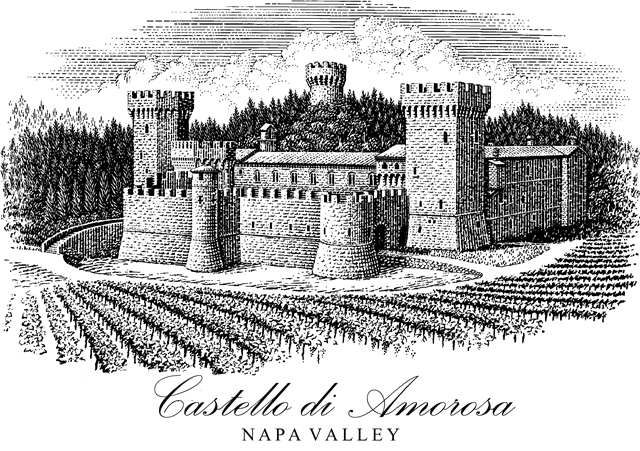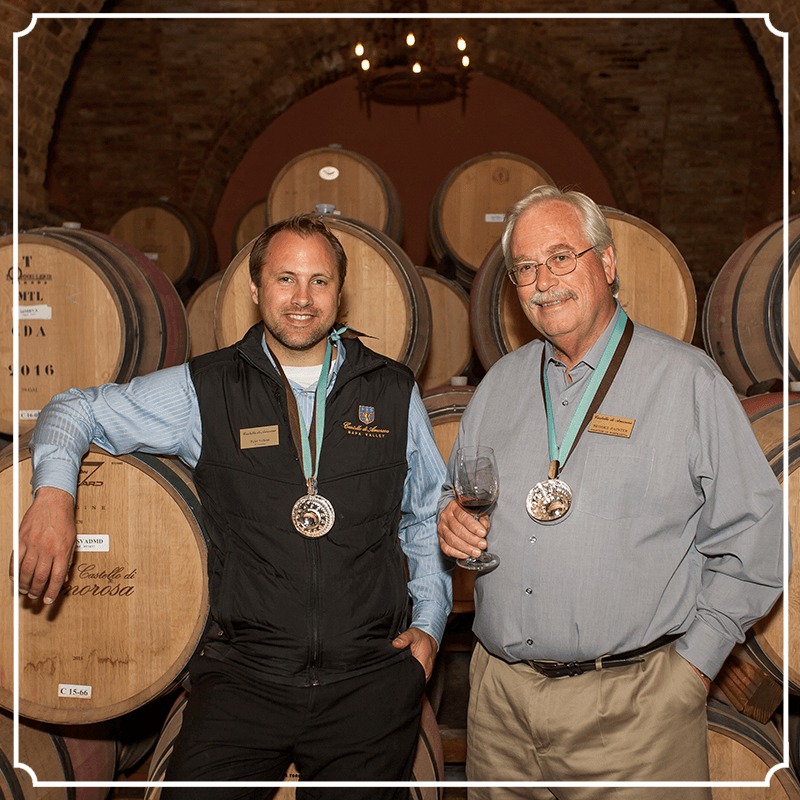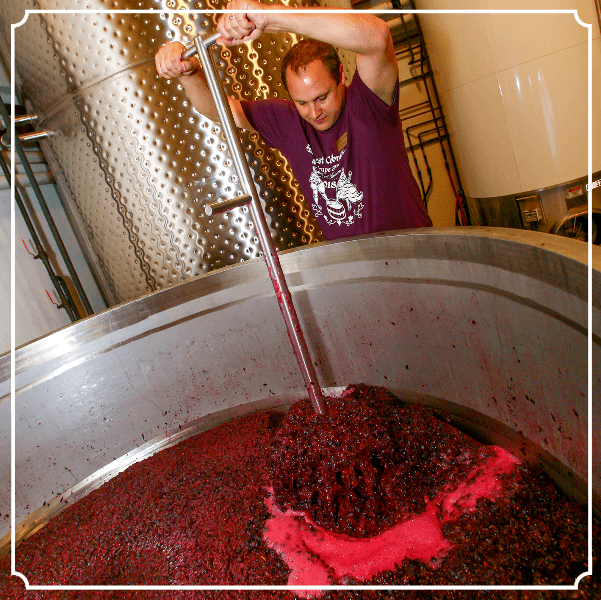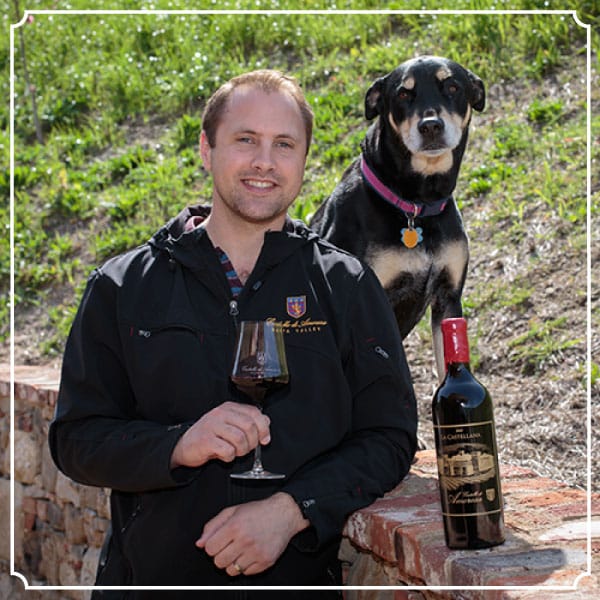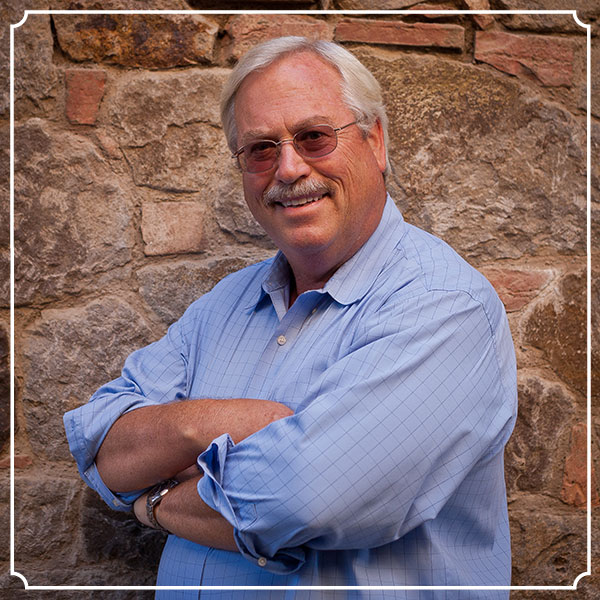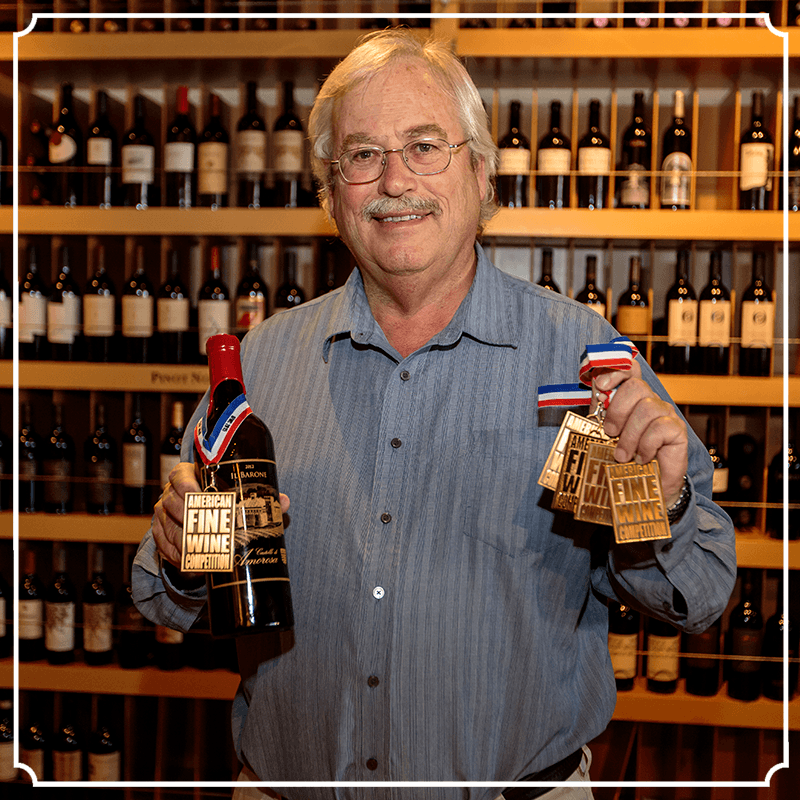
Q: Hello Peter and Brooks, I recently visited the Castello for a wine tasting with my family and bought a case of 2016 Il Brigante for $490 sent to our home in NJ. We received the case a few days ago and stored the bottles in our Sub Zero Wine Chiller. Tonight, we opened the first bottle, and to our dissatisfaction, we each had a substantial amount of silt in our glasses. I can send pictures of this. As you can imagine, we are disappointed about this. Given the price point of the bottles in this shipment and the experience we had at the tasting at your winery, we expected a better quality of product, especially since the wine served at the tasting was silt free. Please advise, if we were to order future bottles of wine from your vineyard, is this the quality that we can continue to expect?
A: “Sediment is present during most of a wine’s life. Dead yeast cells, bits of grapes and seeds, tartrates and polymers are constantly settling to the bottom of a tank or barrel. Some winemakers like to remove most traces of this sediment before bottling. Others think that leaving sediment adds to both the flavor and texture of a wine, and will bottle a wine without filtering (trapping the sediment), fining (adding an agent that binds to the sediment, and then filtering it out), or both. I’m guessing the wine you had wasn’t filtered or fined on purpose, as part of the house style.”
As stated, tannins are naturally occurring and a wine with a bit of age, like the 2008 Cabernet Brigante at almost 15 years from vintage, the development of sediment is expected. At Castello di Amorosa, in order to allow our wines to develop as they mature, we do not filter our wines. Certain vintages and certain varietals (Cabernet Sauvignon, which Brigante is largely comprised of) will have more sediment or as sediment has lightly been referred to “wine diamonds“, Check out a move released in 2019 directed by Amy Poehler, “Wine Country”.🙂
Q: My favorite is the Il Barone and my wife’s is the La Castellana. I still have a case of the 2014 Il Barone and we also have a case of the 2013 La Castellana. She also has a single bottle of a 2010 La Castellana. First, Is there any benefit to keeping the 2010 any longer? The same applies to the 2013? Is the Il Barone a bit young to enjoy now?
A: Hello, If only we had definite answers when we discuss the topic of ageing potential. In general, a safe rule of thumb is 8-12 years from vintage with most quality Napa Cabernet. However, I had a 2006 Il Barone last week and it was still singing, the tannins were fully resolved but the fruit showed more vigor than I had anticipated. I would drink the 2010 Barone and the 2010 Castellana in the next 12-18 months. The 2013’s and particularly the 2014’s have several years of maturing as those were powerful vintages. Thank you for enjoying our wonderful portfolio of wines..and yes, I agree, the sangiovese is a favorite at our table as well.
Q: I’ve heard on the tour that Castello di Amorosa only uses French oak barrels, not American. Why is that?
A: It is a stylistic decision. French Oak barrels are known to impart subtle flavors and spicy aromas to wines, as well as contribute to a silky mouthfeel. American Oak on the other hand is more obvious when used, with more sweetness and dominating aromas of coconut and vanilla. Because the French oak trees are older than American oak trees when they are ready for harvesting, and because less barrel can be made from French oak due to the nature of the wood, French barrels are considerably more expensive than American ones. At Castello di Amorosa we believe that the extra cost is worth it because the French oak is more compatible with our particular wines styles. We aim to elevate a wine with the use of oak and highlight the fruit itself, and we achieve that by using a lighter touch when it comes to oak.
Q: How is a “rosé” wine made?
A: The color in a red grape is contained in the grape skins. The pulp and juice inside of each berry is essentially colorless. When red grapes are freshly pressed the initial juice that is extracted will be very pale. For lighter styles, like our Cresta d’Oro Rosato or the Spumante del Castello Brut Rosé, the Pinot Noir grapes are pressed immediately and at a low pressure. As pressing continues at a higher pressure the amount of color that is squeezed from the skins increases, but astringency and bitterness will also seep in to the juice. A more delicate way to increase color extraction is to leave the reds grapes in contact with the juice in a tank for a day or 2 prior to pressing (this is called the “cold soak”). Our Gioia and La Fantasia are made in this way, with a brief cold soak followed by pressing, all before fermentation begins.
Q: Should I store my bottles on their sides, upside down, or upright?
A: Bottles sealed with screw caps should always be kept upright. In the short term, upright is fine for bottles sealed with cork, but for aging the best choice is to lay bottles on their sides. This keeps the cork surface wet and allows sediments to collect on the sidewall of the bottle. “Neck down” is acceptable as far as wine quality as well, but you risk excessive sediment collecting on the cork, which can be messy when opening. If the corks dries out it can fall apart or shrink, allowing air to pass in and out of the bottle, prematurely oxidizes the wine. Avoid keeping cork-sealed bottles upright for extended periods to keep your wine tasting its best for years to come.
Q: We purchased a bottle of 2013 Il Barone while at your facility years ago. We are going to open it tonight and asking about decanting and what you would recommend?
A: Great question. Some vintages throw more dirt (develop sediment) over time than other vintages. Especially tannin driven grapes/wines like Il Barone, our reserve Cabernet Sauvignon.
The 2013 happens to be a vintage that has been showing sediment. Either decant gently off the sediment , continue to decant until you see the signs of particulate solids. Once you see this discontinue dispensing the wine into the decanted. You can also do this pouring directly into the glass.
Here is an important factor, approximately 3 hours prior to pouring, stand the bottle upright so any sediment that has developed and accumulated into the shoulder of the bottle will settle at the bottom thereby making for an effective decant.
Cheers and enjoy that fabulous Cabernet.
Cheers, Peter Velleno, Winemaker
Q: We purchased a case of white “del Sol” something about 10 years ago while on holiday.
We were reminiscing about wines we enjoyed and wanted to get another case. Unfortunately, we didn’t keep any of the paperwork and don’t see anything like it on your website.
Has there simply been a name change or is it no longer available?
Thanks, Mike
A: Hello,
Q: What types of grapes are grown in the vineyards surrounding the Castello?
A: The Castle sits on Diamond Mountain, one of the warmest and driest parts of the Napa Valley. Red grapes grow best here, so we have Cabernet Sauvignon, Sangiovese, and Merlot as our main blocks, along with some very small parcels of Malbec, Petit Verdot, and Primitivo. White grapes need cooler climates to produce top quality wines, so our white grapes are grown elsewhere, such as Los Carneros in the southern end of the Napa Valley near the San Francisco Bay, and nearby Sonoma County and Mendocino County.
Q: When doing primary fermentation for reds in barrel, what kind of bung do you feel comfortable using? I’m guessing you use something other than the regular silicone bung because the pressure of wine trying to push the bung out.. I’m wanting to do an experimental primary fermentation in barrel this year, but leaving the head off so I can do punchdowns in the barrel. any advise or recommendations welcome. Thanks and good luck with your 2020 vintage!
A: We use a silicon venting fermentation bung, same as we would use on a barrel of fermenting Chardonnay juice. For the reds we swap to a regular bung when we go to roll the barrels to mix them, then quickly back to the venting bungs.
If you are leaving the barrel head off then the barrels sits up on its end, and you use a regular silicon bung to seal the hole. Avoid hitting the bung from the inside when doing punch downs because it will pop out! That’s messy.
We have done primary fermentation for reds both with the barrels closed and with the barrels open. I prefer the closed method because I am seeking a result different than a traditional fermentation (gentler and more carbonic). The “open top” style of barrel fermentation works well but, for us, produced a similar style of wine to that made in a small tank or bin with punch downs. Your choice might depend on why you are doing it, specifically if it will be blended with traditionally made wines (which is what we tend to do) or be a stand alone.
Apart from figuring out how to get the grapes in and then out of the barrels, the most challenging aspect of barrel fermentation for reds is the temperature control. There is far less precision and the progression of the fermentation can be unpredictable. Best of luck.
Cheers!
Peter Velleno
Q: Do any of your wines (sweet rose wines) contain high fructose corn syrup?
A: The sugar in wine (here we will specifically address sweet wines) is called residual sugar, or RS, and it doesn’t come from corn syrup or granulated sugar, but from the natural occurring sugars in wine grapes that include fructose and glucose. During winemaking, yeast converts sugar into alcohol making a dry wine. However, sometimes, by design, not all the sugar is fermented by the yeast leaving some sweetness. Hence making a wine with RS, residual sugar, or a sweet wine.
Q: We were at the castle in oct 2018 and bought a bottle of the la Fantasia rose 2017 – wondering if it is a blend? Thanks- Jane
A: Hello Jane, La Fantasia is a proprietary blend of grapes including but not limited to Syrah, Valdiguié, Sangiovese etc. However, the beauty of La Fantasia is not in the specific grape varietals, it is about the unique method of wine making; there is nothing quite like it in California but it is similar in style and flavor profile to a Brachetto from Italy.
Cheers
Peter Velleno, Winemaker
Q: Are most of your wines clarified only by racking? Or do you implement filtration or introduce clarification agents? You mentioned that racking minimizes the need, but I’ve always struggled to get a very clear wine with only racking. Thanks again for the videos! – Trevor.
A: All wines are treated on an individual basis. Everything is racked multiple times to clarify. Sometimes that is enough, but prior to bottling wines most wines are filtered to some degree. The goal is to intervene as little as possible, while ensuring that quality is maintained. Sweet wines and juices are always filtered to prevent fermentation in the bottle.
Cheers
Peter Velleno, Winemaker
Q: Are there any major differences in bloom between grape varieties?- Trevor
A: The date of bloom is the result of many factors interacting together: soil, micro climate, fertilization, rainfall, variety and clone, rootstock, pruning technique…. Generally I think all varieties on a particular property will go through bloom within 2 weeks of each other. Everything we own will bloom over the course of about 1 month.
Cheers
Peter Velleno, Winemaker
Q: What’s the shelf life of an unopened La Fantasia wine?
Q: Hi! I have an opportunity to procure a 3L bottle of 2007 Castello di Amorosa “Il Barone”
Can you provide me a general drinking window for this wine? Want to ensure it can drink through 2025 (my retirement Lol!)
A: Greetings, Lucky you! We produced very few large formats of this vintage. The 2007 Barone was our first “big” Robert Parker/Wine Advocate score and as a young winery, ratings are especially important. Since large formats generally equate to more longevity and the ’07 Barone in 750ml format is still drinking exceptionally well, a 3L (double magnum) has to be spectacular.
Q: Hello! Your website is wonderful and has an amazing amount of information so if I missed this, I apologize. I have an extreme egg allergy so wanted to ask about your fining process to determine if egg whites are utilized for some of your wine? If so, could you provide which would be free from egg whites vs which ones use them?
We’re planning our first trip to Napa over the Columbus Day weekend so starting our homework now!
Thank you so much!
Carol Jones
A: Hello, Yes, we do use egg whites in the fining process. Here is a more comprehensive explanation than I can detail. Good Luck and we hope you enjoy your visit to the Castello.
Q & A Policy:
Please allow us a 48 hour window, to answer all questions to the winemaker. If you have a follow up question, just submit a new question and refer to your old question.
